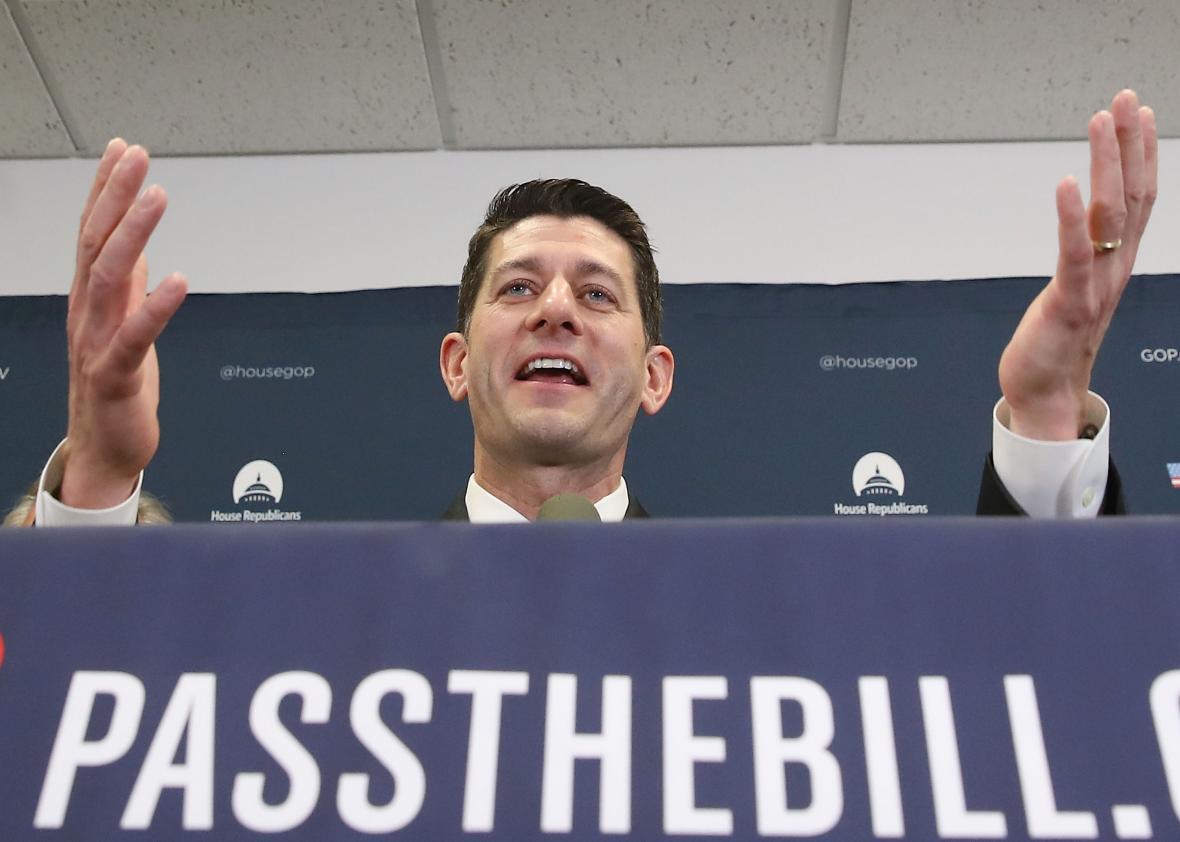Despite a last-minute attempt to make the legislation more generous to people over 50, it looks like the Republican health care plan would still be an unmitigated disaster for many Americans nearing retirement age. Or so suggests a new analysis from the progressive Center on Budget and Policy Priorities.
After the Congressional Budget Office reported that some older insurance customers would see their premiums rise by as much as 750 percent under the GOP’s plan, party leaders went back and added a roughly $85 billion dollar placeholder into their bill supposedly designed to beef up its insurance subsidies for the 50-to-64 demographic. While nobody knows precisely how the money would be used—it’s been called a “magic asterisk”—the move was meant to assuage the fears of moderates in the House and Senate who are feeling queasy about the idea of pricing near-seniors out of the insurance market.
Unfortunately, it appears that the asterisk doesn’t actually perform that much magic.
Even with the additional $85 billion kicked in, the CBPP estimates that the average 60-year-old earning $22,000 would still see his premiums after tax credits rise by more than $6,000, to $7,470. That’s slightly less vertiginous than the $9,349 they’d have owed under Trumpcare 1.0, but it’s still way outside the realm of affordability.
In some states, the price hikes will be far more dramatic, CBPP finds. In Alaska, premiums for 60-year-olds could reach near $27,000, while in Wyoming, West Virgina, Oklahoma, North Carolina, Nebraska, and Arizona they’d top $10,000.
Here’s why the $85 billion, which amounts to a roughly 24 percent increase in the bill’s total funding for tax credits, doesn’t do much good for the people it’s supposed to help. Under the Affordable Care Act, the government currently gives lower-income Americans tax credits to buy insurance that cap their premiums as a percentage of their income. So if you’re a 62-year-old earning a bit above the poverty line in Arizona, the ACA keeps your monthly insurance payments low no matter what. Trumpcare nixes that system and replaces it with a series of largely flat tax credits based on age (they start phasing out for those who make more than $75,000). As written, those work to $3,500 for 50- to 59-year-olds and $4,000 for those 60 and up—not nearly enough to cover the full cost of premiums, which could easily reach five figures for an individual in their 60s, since Trumpcare would allow insurers to charge them up to five times what they charge twentysomethings (under Obamacare, the ratio is 3 to 1). The extra $85 billion, CBPP estimates, would only get those credits up to $5,100 and $5,900, not enough to make a significant difference for someone with a lower-middle-class income.
The CBPP’s analysis suggests there’s no real way for Republicans to paper over this problem in the legislation without spending far more money than they’d be willing. As long as insurers can charge near-seniors through the nose and the tax credits aren’t targeted based on income but instead spread thinly across large demographic brackets, poorer, older Americans are going to face a massive affordability gap. All the way down to its foundations, this bill is engineered to screw poorish 64-year-olds.
